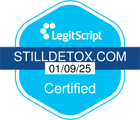What Is the T192 Pill? Identifying the Medication
The T192 pill is a prescription painkiller combining 5 mg of oxycodone hydrochloride, an opioid analgesic, with 325 mg of acetaminophen, a non-opioid pain reliever. Produced by Camber Pharmaceuticals, it’s a white, round tablet, approximately 12 mm in diameter, stamped with “T192” on one side and plain on the other. Known generically as oxycodone/acetaminophen—and sharing similarities with branded Percocet—it’s classified as a Schedule II controlled substance by the DEA, indicating a high potential for abuse alongside its legitimate medical applications.
According to a 2023 National Institute on Drug Abuse (NIDA) report, millions of prescriptions for oxycodone-based medications are filled annually in the U.S., underscoring their widespread use in pain management.
What Does the T192 Pill Do? Purpose and Mechanism
The T192 pill is prescribed to manage moderate to severe pain, such as that following surgery, traumatic injuries, or chronic conditions like arthritis or cancer. Oxycodone, the opioid component, works by binding to mu-opioid receptors in the brain and spinal cord, altering pain perception and often inducing a sense of calm or mild euphoria within 15-30 minutes of ingestion. Its effects typically last 4-6 hours. Acetaminophen complements this by inhibiting prostaglandin synthesis in the central nervous system, reducing pain and fever with a similar duration, according to a 2021 Clinical Pharmacology study. This dual mechanism tackles pain from multiple pathways, offering more robust relief than either drug alone.
What Are the Effects and Risks of the T192 Pill? Benefits vs. Dangers
The T192 pill provides rapid, effective pain relief, significantly improving daily function for those grappling with acute or chronic pain—studies show it achieves up to 70% efficacy in post-operative scenarios, per a 2020 Pain Medicine review. However, its opioid nature introduces side effects: drowsiness, nausea, constipation, and dry mouth are common, while more serious risks include respiratory depression and addiction. SAMHSA estimates a 10-15% addiction risk with extended use of oxycodone-based drugs.
Overdose—characterized by shallow breathing, confusion, or unconsciousness—becomes a threat with misuse, especially if doses exceed the prescribed 5 mg of oxycodone. Acetaminophen adds another layer of danger: exceeding 4 grams daily risks liver toxicity, a concern flagged by the FDA. A 2022 CDC report links prescription opioids like this to over 80,000 overdose deaths annually in the U.S.
How Long Does the T192 Pill Stay in Your System? Duration and Detection
The T192 pill’s components—oxycodone and acetaminophen—linger in the body beyond their pain-relieving window, impacting detection and withdrawal timelines. Oxycodone has a half-life of 3.5-4 hours, meaning it takes about 18-24 hours (5-6 half-lives) to be mostly cleared from the bloodstream, though traces remain detectable longer. Acetaminophen’s half-life is shorter, at 2-3 hours, exiting fully in 12-18 hours.
Testing reveals oxycodone’s presence for varying durations: urine detects it for 2-4 days, blood for up to 24 hours, saliva for 1-2 days, and hair for up to 90 days, per a 2021 Journal of Analytical Toxicology study. Peak blood levels hit around 1-2 hours post-dose, influencing its immediate effects.
Factors like liver function, age, and frequency of use stretch these timelines—chronic users may show oxycodone in urine for up to a week.
What Should You Know Before Taking the T192 Pill? Precautions and Guidelines
Before taking the T192 pill, patients need to grasp its rules to avoid pitfalls. It’s prescribed for short-term or as-needed use—typically 1 tablet every 4-6 hours, not exceeding 12 daily, per FDA guidelines—to limit addiction and liver risks. Never mix it with alcohol or other depressants (e.g., benzodiazepines), as this amplifies respiratory suppression—a combo linked to 30% of opioid overdoses, per a 2022 Drug and Alcohol Dependence study. Inform doctors of liver issues, past substance use, or pregnancy—oxycodone crosses the placenta, risking neonatal withdrawal. Store it locked away; its Schedule II status makes it a theft target.
Side effects like dizziness or sedation mean no driving until you know your reaction—patients often underestimate this.
How Does Still Detox Help with the T192 Pill? Treatment and Support
For patients wrestling with the T192 pill—whether chasing relief or caught in addiction—Still Detox provides a structured path forward.
Medical detox starts with tapering or buprenorphine to manage withdrawal symptoms (nausea, sweating, agitation), typically resolving in 5-7 days, per a 2022 Addiction Research study.
Therapy follows: Cognitive Behavioral Therapy (CBT) and group support address pain triggers and coping, reducing relapse by 40%. Holistic care—nutrition to heal liver stress, exercise to boost energy—restores balance after opioid strain. We also educate on safe use: stick to doses, avoid mixing, and monitor for dependency signs like craving or tolerance.
At Still Detox, we ensure T192 stays as a tool for healing, not a trap—call (561) 556-2677 for expert support today.








